| [1]Garaj-Vrhovac, V, Kopjar N. The alkaline comet assay as biomarker in assessment of DNA damage in medical personnel occupationally exposed to ionizing radiation. Mutagenesis.2003; 18:265-271.
[2]Blakely WF, Prasanna PG, Grace MB, et al. Miller. Radiation exposure assessment using cytological and molecular biomarkers. Radiation Protection Dosimetry.2001;97: 17-23.
[3]Budhwar R, Bihari VN, Mathur A, et al. DNA-protein cross links as a biomarker of exposure to solar radiation: a preliminary study in brick-kiln workers. Biomarkers.2003;8: 162-166.
[4]Porciani S, Lanini A, Balzi M, et al. Polyamines as biochemical indicators of radiation injury. Phys. 2001;17 : ( Suppl. 1) 187-188.
[5]Menard C, Johann D, Lowenthal MT, et al. Discovering clinical biomarkers of ionizing radiation exposure with serum proteomic analysis. Cancer Res.2006;66:1844-1850.
[6]Arun S, Laila MP, Thekkelnaycke MR, et al. Metabolomic profiles delineate potential role for sarcosine in prostate cancer progression.Nature. 2009;457(7231):910-914.
[7]Wolfram, RM., Budinsky AC, Palumbo B, et al. Radioiodine therapy induces dose-dependent in vivo oxidation injury: evidence by increased isoprostane 8-epi-PGF.Nucl Med. 2002;43:1254-1258.
[8]Wang LF, Hu XJ, Peng RY, et al. Application of 1H-NMR-based metabolomics for detecting injury induced by long-term microwave exposure in Wistar rats' urine. Anal Bioanal Chem. 2012; 404(1):69-78.
[9]John BT, Andrew DP, Kristopher WK, et al. Radiation metabolomics:1. Identification of minimally invasive urine biomarkers for gamma-radiation exposure in mice. Radiation Research.2008;170(1):1-14.
[10]John BT, Andrew DP, Kristopher WK, et al. Radiation metabolomics:2. Dose- and time-dependent urinary excretion of deaminated purines and pyrimidines after sublethal gamma-radiation exposure in mice. Radiat Res.2009; 172(1):42-57.
[11]Christian L, Andrew DP, Josef S, et al. Radiation Metabolomics:3. Biomarker discovery in the urine of gamma-irradiated rats using a simplified metabolomics protocol of gas chromatography-mass spectrometry combined with random forests machine learning algorithm. Radiation Research.2009;172(2):198-212.
[12]Johnson CH,Patterson AD,Krausz KW,et al.Radiation metabolomics.4. UPLC-ESI-QTOFMS-Based metabolomics for urinary biomarker discovery in gamma-irradiated rats. Radiation Research. 2011;175(4):473-484.
[13]Johnson CH, Patterson AD, Krausz KW, et al. Radiation metabolomics. 5. Identification of urinary biomarkers of ionizing radiation exposure in nonhuman primates by mass spectrometry-based metabolomics. Radiat Res. 2012;178(4): 328-340.
[14]Coy SL, Cheema AK, Tyburski JB, et al. Radiation metabolomics and its potential in biodosimetry. Int J Radiat Biol.2011;87(8):802-823.
[15]Ma Z, Huo C, Zhou S, et al. Metabonomic study on siwu tang in radiation-induced blood deficient mice. Zhongguo Zhong Yao Za Zhi.2012;37(9):1289-1295.
[16]霍超,王穆,马增春,等.辐射损伤所致血虚证小鼠模型及四物汤反证的代谢组学研究[J]. 天津中医药,2010,27(3):233-235
[17]Wang M, Rang W, Zhang Q, et al. NMR-spectroscopy-based metabonomic approach to analysis of Siwutang, a novel prescription, treated blood deficiency in mice. Zhongguo Zhong Yao Za Zhi.2010;35(5):630-634.
[18]Huo C, Ma Z, Wang M, et al. NMR-spectroscopy-based metabonomic study on mouse model of blood deficiency syndrome induced by compound method of bleeding, starved feeding and exhausting and effect of siwu tang. Zhongguo Zhong Yao Za Zhi. 2010;35(23):3194-3198.
[19]Chen C, Brenner DJ, Brown TR. Identification of urinary biomarkers from X-irradiated mice using NMR spectroscopy. Radiat Res. 2011;175(5):622-630.
[20]Neerathilingam M, Volk DE, Sarkar S, et al. 1H NMR-based metabonomic investigation of tributyl phosphate exposure in rats. Toxicol Lett.2010;199(1):10-16.
[21]Schoedl K,Schuhmacher R, Forneck A.Correlating physiological parameters with biomarkers for UV-B stress indicators in leaves of grapevine cultivars Pinot noir and Riesling. Journel of Agriculture Science.2013;151(2):189-200.
[22]Lake JA, Field KJ, Davey MP, et al. Metabolomic and physiological responses reveal multi-phasic acclimation of Arabidopsis thaliana to chronic UV radiation. Plant Cell Environ. 2009;32(10):1377-1389.
[23]Kim S, Yun EJ, Hossain MA, et al. Global profiling of ultraviolet-induced metabolic disruption in Melissa officinalis by using gas chromatography-mass spectrometry. Anal Bioanal Chem.2012;404(2):553-562.
[24]Smutná M, Beňová K, Dvo?ák P, et al. Protein carbonyls and traditional biomarkers in pigs exposed to low-dose gamma-radiation. Research in Veterinary Science.2013, 94(2):214-218.
[25]Liu H, Wang Z, Zhang X, et al. Selection of candidate radiation biomarkers in the serum of rats exposed to gamma-rays by GC/TOFMS-based metabolomics. Radiat Prot Dosimetry.2013;154(1):9-17.
[26]Gruber F, Bicker W, Oskolkova OV, et al. A simplified procedure for semi-targeted lipidomic analysis of oxidized phosphatidylcholines induced by UVA irradiation. J Lipid Res. 2012;53(6):1232-1342.
[27]赵娟,朱一婧,曾露,等.作用于FTase 和Raf-1 激酶的新型抗肿瘤药物的设计[J]. 药学学报,2011,46 (2): 170−178.
[28]Bott R, Dublineau I, Gourmelon P, et al. The metabolomic approach identifies a biological signature of low-dose chronic exposure to cesium 137. J Radiat Res. 2012; 53(1):33-43.
[29]张芳玲,邵蔚.牛磺酸对NMDA诱导的视网膜神经节细胞损伤的保护作用[J]. 江苏医药,2013,39(3):263-265.
[30]陆彩玲,宋凌勇,唐深,等.牛磺酸改善染锰大鼠学习记忆能力的海马蛋白质组学研究[J]. 营养学报,2012,34(6):553-557.
[31]杨曦,陆彩玲,郭松超,等.牛磺酸对锰中毒大鼠学习记忆的影响[J].中国药物与临床,2010,10(2):128-130.
[32]成兰云,门秀丽,张连元,等.内质网应激诱导的细胞凋亡在大鼠肢体缺血再灌注后肺损伤中的作用及牛磺酸的影响[J].中国病理生理杂志,2010,26( 9) : 1776-1780.
[33]李腾,彭靖,吕尚军,等.甘氨酸对烧伤大鼠心肌细胞能量代谢的影响[J].重庆医学,2012,41(33):3476-3478.
[34]Manna SK, Krausz KW, Bonzo JA, et al. Metabolomics Reveals Aging-associated Attenuation of Noninvasive Radiation Biomarkers in Mice: Potential Role of Polyamine Catabolism and Incoherent DNA Damage-repair. J Proteome Res. 2013;12(5):2269-2281. |
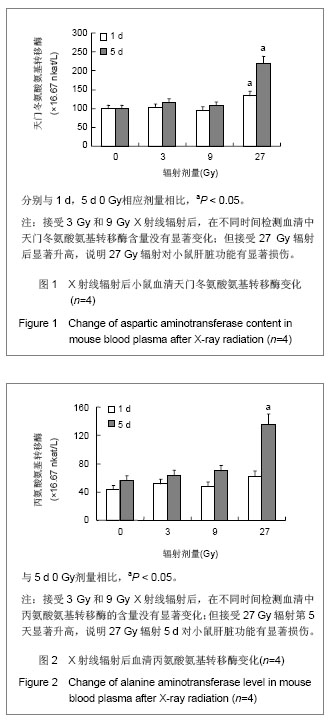
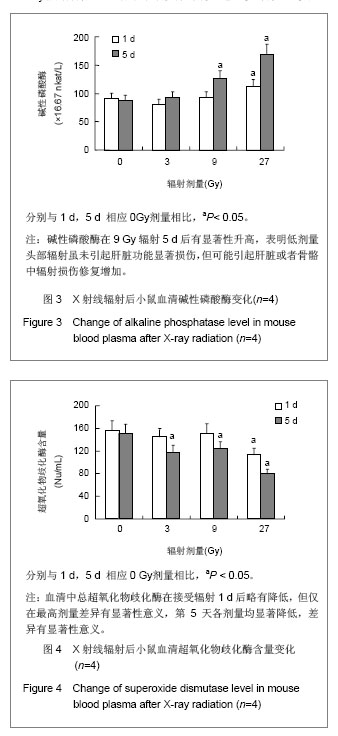
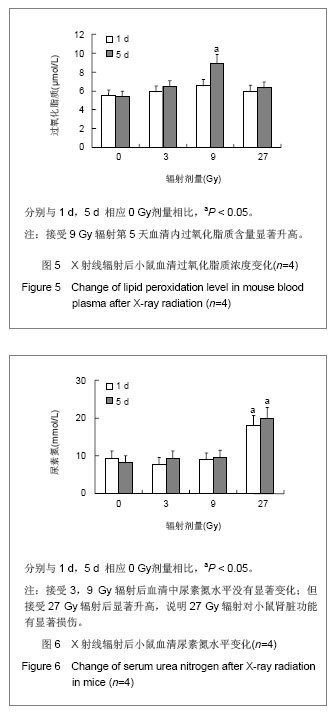
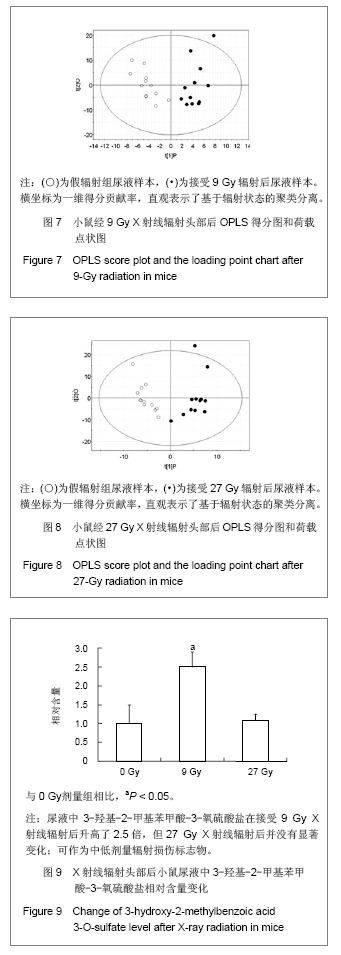
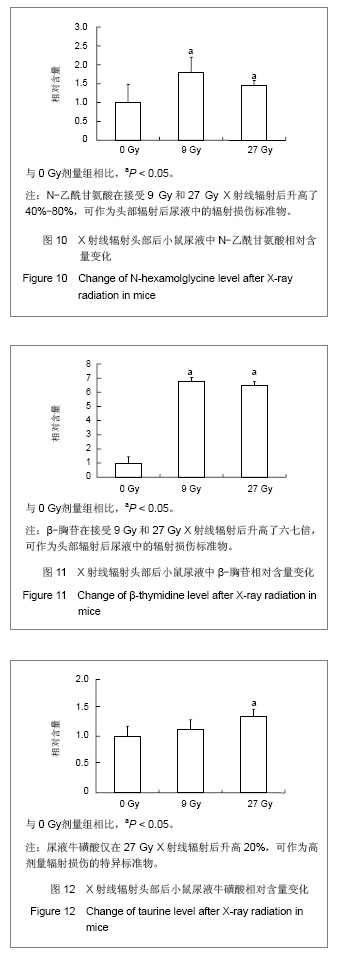
.jpg)